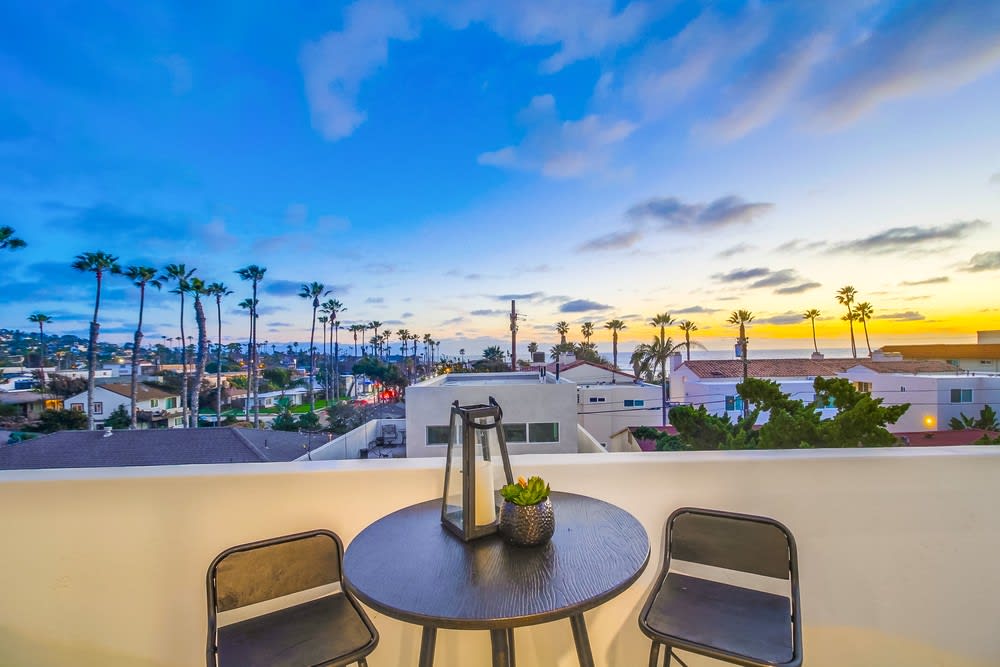When it comes to selling a home, presentation is everything. A well-staged home can make a lasting impression, creating a desirable vision of potential homeownership for buyers. According to the National Association of Realtors, 58% of buyers' agents declared that home staging affects their clients’ views of homes.
Fast facts about home staging
Referencing TheZebra.com, 82% of buyers' agents stated that staging a home made it easier for buyers to envision the property as their future residence. Nearly half of all real estate agents believe that home staging influenced most buyers' perception of the home. In 2019, home buyers spent an average of $400 to stage their homes, according to the National Association of Realtors. When considering which rooms to stage, it's noteworthy that the home office and guest bedrooms are usually the least crucial. Impressively, homes professionally staged spend 73% less time on the market than unstaged homes. Furthermore, homes staged before being listed sold for 25% more than unstaged homes.
Explaining home staging
Home staging is the process of making a home more appealing to potential buyers. It involves rearranging, refurnishing, and redecorating a property to make it more attractive. The goal is to highlight a home's strengths, downplay its weaknesses, and appeal to the greatest number of potential buyers.
Home staging is important because it helps prospective buyers visualize themselves living in the space. It takes a property from being a space that is lived in by the seller to a place that potential buyers can see as their own. Home staging can also potentially increase a home's selling price and decrease the time it's on the market.
Home staging choices
There are several options when it comes to home staging. You can do it yourself, hire a professional home stager, or ask your real estate agent to help. Each option has its benefits and drawbacks; the best choice will depend on your circumstances.
You can stage your home yourself. With creativity, a few DIY home staging tips, and a commitment to work, homeowners can successfully stage their homes. The benefits of this approach include saving money and having complete control over the process. Your real estate agent can be a valuable resource in the home staging process. Many agents have a keen eye for what sells and can offer suggestions on presenting your home in the best light. They can provide staging tips and recommend professional home stagers if needed.
At the same time, professional home stagers are trained to maximize the appeal of your home to potential buyers. They can assess a space and know exactly what to add, what to remove, and how to arrange what's left to make the home appeal to as many potential buyers as possible.
Expenses related to home staging
Home staging costs can vary widely, depending on the size of the home, the number of rooms to be staged, and the extent of work needed. As per the National Association of Realtors, in 2019, the average amount spent on home staging was $400. However, consider this an investment, as a well-staged home often commands a higher selling price.
Therefore, home staging is typically worth the time and money invested. The goal is to create an environment where buyers can imagine themselves living in your home, which can motivate them to make an offer.
Budget-friendly home staging
There are many ways to stage a home on a budget. A fresh coat of paint, strategically placed lighting, and minimizing personal items are all inexpensive ways to make your home more appealing to prospective buyers. Renting furniture or borrowing pieces can also be cost-effective alternatives.
Staging your home for photography
When staging a home for photos, remember that potential buyers will first encounter your home online. Good lighting, careful furniture arrangement, and minimal clutter can help create photographs that make your home stand out in online listings.
Proven home staging advice
Remove excess items
Decluttering is the first and most crucial step in home staging. Remove excess belongings, unnecessary furniture, and personal items, like family photos. This helps prospective buyers imagine themselves in your space rather than feel like they are intruding in someone else's home.
Detailed cleaning
Deep cleaning is essential. This includes everything from the windows and hardwood floors to the grout in your bathroom tiles. A clean home is inviting and gives the impression of a well-maintained property.
Fixing damages
Patch and repair any visible damage. This could be anything from a hole in the wall to a loose doorknob. Repairing these minor issues can make a big difference in the overall impression your home gives off.
Picking suitable colors
Choose neutral colors for walls and large pieces of furniture. This allows potential buyers to imagine how they would add style to the home.
Emphasize natural light
Make use of natural light by opening blinds and curtains. Natural light can make a room feel spacious and welcoming. Consider adding table lamps to brighten the space for rooms with less natural light.
Reorganizing Furniture
Rearrange your furniture to create a sense of balance and space. A well-placed sofa or desk can show a room's functionality and size.
Enhance outdoor spaces
Don't forget the outside of your home. Improve curb appeal by maintaining your lawn, painting your front door, and adding a few potted plants. Also, consider staging an outdoor living space.
Home staging pitfalls to avoid
Avoid over-staging or creating a space that looks too perfect. This can make a home feel impersonal and deter potential buyers. Also, avoid using bold, bright colors that might not appeal to most buyers. The goal is to create a universally appealing space that buyers can see as their future home.
Frequently asked questions about home staging
What happens to furniture after staging?
In most cases, if you rent furniture for staging, it will be returned to the rental company once your home is sold. If a professional stager used its inventory, it would retrieve it after the sale.
Is it better to sell a house empty or staged?
While it may seem easier to sell an empty house, staging can make a big difference. A well-staged home can help prospective buyers imagine the potential of the space, often leading to quicker sales and higher offers.
Should you set the table when staging a home?
Yes, setting the table can help create a vision of family meals and celebrations for potential buyers. It's a small touch that can contribute to the overall impression of a warm, inviting home.
What is the difference between home staging and interior design?
Home staging and interior design are related but distinct. Interior design is about personalizing a space to suit the homeowner's taste and lifestyle, while home staging is about depersonalizing a space to appeal to as many potential buyers as possible.
Learn more about Catrina Russell, real estate agent extraordinaire
Catrina Russell brings a wealth of experience to the table, especially in the Ocean Beach/Point Loma area, which she knows like the back of her hand. Her deep-rooted understanding of the local community and the real estate market equips her to help her clients make well-informed decisions.
Prospective clients can avail themselves of free, no-obligation market evaluations for their homes and gain insights about current market offerings. If you're looking to buy or sell a home or have any questions about the Ocean Beach/Point Loma real estate market, contact Catrina Russell today.




